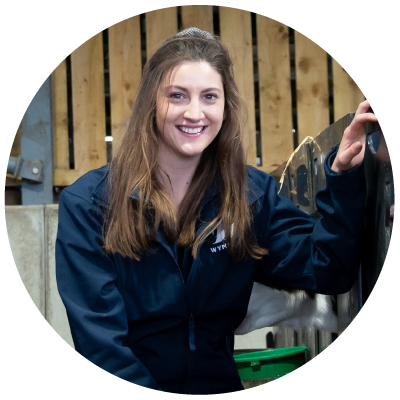Heat stress in the dry cow pen can have significant implications on both cow and unborn calf performance. Heat stressed cows have decreased dry matter intakes, increased metabolic stress, poor transition and decreased milk production and immune response. A factor which can often become overlooked is the impact heat stress can have on the calf in utero, which can impact its future on your farm.
Thermoneutral zone
The thermoneutral zone for dairy cows is usually considered to be -15°C to +25°C. Above this the cow will try to cool herself by increasing dispersion of heat (increasing blood flow, panting drooling etc) and limiting heat production (reduces intakes and slowing rumination).
Symptoms of heat stress:
-
Lethargic and decreased activity
-
Reduced DMI
-
Bowed and bobbing heads
-
Increased respiration
-
Panting
-
Grouping/tightly packed together
Impact of heat stress on the calf
In heat stressed cows, the blood flow to the calf through the placenta is restricted as blood is diverted to try cool the animal. This, paired with decreased DMI can significantly affect the calf at an essential stage of in utero development.
Impact for new-born calf:
- Increased mortality
- Increased morbidity
- Lighter birthweight
- Compromised passive immunity
Impact on post-weaned calf:
- Lighter weaning weights
- Longer age to reach puberty
- Increased age to first service
- Increased number of services to conception
- Increased age at first calving
Impact once calved:
- Increased BCS at calving
- Reduced milk yield
- Little impact on milk composition
Close-up and fresh calved cows are increasingly susceptible to suffering heat stress, at any time of year, even in cold winters! Significant factors, commonly found in the dry cow shed, that determine heat stress are:
- High humidty
- Poor ventiliation
- High stocking density
Tackling heat stress
With dry cows often considered second-best to milking cows, it is common to see them kept in dark, poorly ventilated areas at high stocking densities.
Air temperature and humidity will directly influence how well a cow can cool. Little air movement and high humidity reduces rate of heat exchange, increasing heat stress at lower temperatures.
Ventilation
Considering ventilation will have significant benefits to dry cows in addition to reducing heat stress and improving humidity levels.
Good ventilation will:
- Remove bacteria
- Reduce mastitis risk
- Reduce draughts
- Reduce humidity
Consider:
- Outlets – at least 0.5m2/cow
- Inlets – twice the outlet area
- Mechanical Ventilation – can enhance natural ventilation


Heat stress in NOT only a summertime issue!
Stocking density
Overstocking can have a significant effect on the health and performance of the cows and calves once they leave the dry cow shed.
- Stocking density should be kept to a maximum of 80-85% of capacity at any time
Factors to consider for stocking density:
- Lying space (>7.5m2/cow)
- Feed space (>0.9m/cow)
- Water space (>10cm/cow)
- Ventilation
For further advice on the range of hardware solutions we can offer please contact a member of the Hardware Team










